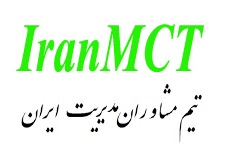-
If you arrive at this blog, you should feel the necessity of "brand management" or "brand management" for some reason.
This blog Mission Driven Brand is a blog that explains branding and brand strategy formulation · business skills.
In the business world, however, it is said to be "a strategy of 20% and execution of 80%", it is not just a goal but a start only by "setting up a brand strategy".
In order to link branding to results, "excellent brand strategy" is of course necessary, but "superior brand management that realizes brand strategy" is also required.
However, "brand management" is a highly abstract concept, so there is no definite definition. And since there is no definite definition, what is "what" "what to do" is brand management? It is the current situation that it is difficult to make common recognition of.
Therefore, in this article, I will explain "brand management" indispensable for leading the brand strategy to results.
What is brand management? Meaning of brand management
"Brand management" is often defined as follows when searching on Google.
Brand management is the ongoing activity to increase brand equity.
Brand management is an activity that constantly cycles the improvement cycle in order to raise the value of the brand owned by the company itself, as well as the value of the company as a whole
Brand management is a management method that comprehensively manages brands in favorable conditions for companies
However, if you look at these definitions, do you see clear images of what "brand management" is "what" "what to do"?
Humans can not do things that can not be imaged. Especially brand management is an effort involving many team members, but it is self explanatory that brand management does not work unless we have common recognition that "what" and "what to do" with brand management.
The author of this blog k_bird defines "branding" as follows so that it can be used effectively in practice.
What is branding?
A brand is a thing or service that accompanies "empathy" with "a unique role" for consumers.
Branding refers to efforts to create identity and empathy as "as much as possible" and "as strong as possible".
The merit is a long-selling brand based on "nominated purchase" that goes beyond "impulse buying request."
And, based on the above definition of "branding", "definition of brand management" is as follows.
What is brand management?
What: Business activities that create empathy for the brand
What to do: to properly manage so that its effect is maximized
And in order to make it easier to make this definition practical, it is organized into the following nine elements.
To properly manage the corporate brand
Appropriate management of multiple brand portfolios
To properly manage organizations and human resources that carry out brand management
To properly manage the design policy of the brand
Proper management of branding (process) and results
To properly manage response to market changes
To properly manage the brand market price
Make the best use of brand equity (assets)
To properly manage intellectual property rights of brands
Let's explain in order below. If you would like to know more detailed brand management method, please visit each landing page.
Element of brand management 1: Management of corporate brand
Corporate brand is the fundamental guideline for brand management.
But do you also feel that "corporate branding is abstract" or "I do not know what to handle from?"
Unlike brand marketing, corporate branding does not have "specific selling" such as goods and services. Furthermore, since brand marketing is a story of "marketing related department" and "daily work", corporate branding is a "convoluted enterprise as a whole" or "anticipated five or ten years ahead" More complexity increases.
And, as a matter of course, in order to make corporate branding successful, you can not be a monolith unless all project members promoting corporate branding understand "What is corporate branding?"
And if we proceeded corporate branding without becoming a monolith, we ended with a surface result such as "change corporate logo design" or "change corporate slogan", and the outcome is uncertain.
Therefore, the following article explains how to proceed about corporate branding and examples in an easy-to-understand manner.
If you are interested in "corporate branding" and want to lead your company's corporate branding to success, I would be pleased if the following article helps you.
If the market itself is growing to the right as in the period of high economic growth, there is not much merit to expand product lineup. The reason is that if you diversify forcibly within limited resources, you risk having the risk of losing the scale of each product.
However, as the market matures, the values of consumers diversify and it is easy to shift.
In the world of stock quotes there is the word "eggs not to be included in one basket", but even in the world of marketing, in a situation where the environment surrounding products rapidly changes, having only a single item is a big risk .
Many companies, including your company, will need to develop new products for the next growth. On the other hand, randomness of products that does not take into consideration the consistency or synergy between brands merely wastes management resources by mistake.
As product lineups increase, they must be properly managed.
The idea of "brand strategy strategy" and "brand portfolio strategy" is useful at that time. If you understand "brand system" and "brand portfolio" correctly, it will be possible to demonstrate synergy among brands, not just management of a single brand.
Brand system refers to organizing and structuring the roles and relationships of each brand when a company has multiple brands. The purpose is to organize and organize each brand so that "synergy among multiple brands" can be demonstrated while preventing the cannibales (= equestrials) between their own brands.
Building an appropriate brand system makes it possible to appeal "brand identity" more strongly than when only a single brand is used.
In addition, by systematically locating the role of each brand, we can determine what brands are most important to focus on in the future and optimize resource allocation for brand building.
Furthermore, it is also possible to overlook the brand system of the whole company, verify the possibility of leakage and the possibility of new brands, and to discover promising markets making the most of the current strengths.
In the following article, we describe "Brand System Strategy" and "Brand Portfolio Management" indispensable for creating synergies between brands with examples.
The brand system and brand portfolio are the "foundations" indispensable for starting brand management.
We would be grateful if it would help brand management of your company.
very business consists of two elements, "strategy" and "organization", if simplified.
However, in "branding", books with the theme of "strategy" are abundantly aligned, whereas books captured directly from the "organization" side are surprisingly small.
Therefore, the following article explains "brand manager system" which is one of the effective options for developing excellent branding.
The brand manager system refers to the organizational form of brand management, in which one person in charge is consistently responsible for new product development, profit and loss responsibility, and brand equity. It is a form of brand management organization that is mainly adopted by foreign-affiliated companies, and its success case is said to be P & G.
As keywords such as "P & G" or "brand strategy of foreign-affiliated companies" come out, it tends to be misunderstood that "brand manager system = advanced", but not only the merit but also big disadvantage exists in the brand manager system It is a fact.
If you read the commentary below, you will be able to see the "merit and disadvantage of the brand manager system" as well as "the branch to make the brand manager system work".
Elements of brand management -4: Management of brand design policy
f: id: missiondrivencom: 20180715014153j: plain
When many people come into contact with the brand for the first time, the first thing that we see is "brand design." That is, the brand design creates the first impression of the consumer, and it is a very important factor that affects trial purchase.
When you introduce the brand, the brand design will be transformed into 'package design', 'commercial', 'graphic design', 'WEB design', 'storefront POP design' and so on.
In addition, departments dealing with brand design are becoming increasingly diverse not only in the marketing department to which you belong but also in the digital division · sales planning department · head office · branch office sales.
The design of the brand that you and the designer created with care as well as anything will be "spontaneous and sporadic appearance" if it is subtlely altered by each division, making it impossible to create a strong brand.
The design is said to begin to break from that moment of creation.
Appropriate management of the brand's design policy (visual identity) is indispensable in order to maintain consistency and consistency of the brand design and to manage the operation.
In the following article, "effect of brand design" and "method of properly managing visual identity" are explained with examples. If you are interested, please have a look.
Elements of brand management -5: Management of branding and achievement management
f: id: missiondrivencom: 20180715014202j: plain
Proper results will not come unless you follow the appropriate process.
"Branding" is a highly abstract concept, unlike "product specifications" and "performance" which are "visible" objects. For that reason, it tends to fall into the sensory theory of "somehow" without visualization.
However, we can not manage what we can not see. And what you can not manage can not be improved.
Branding, as well as every business activity involves investment, you need to achieve higher results with less resources. And for that, even if it is "branding" with a high level of abstraction, it is necessary to set "goal", "evaluate strategy and achievement level", "improvement activity for next step" in some way It is an essential element. That's why it's brand KPI management.
KPI is an abbreviation that takes an acronym for "Key Performance Indicator", and translating it into Japanese makes it a "key performance indicator". The meaning is "an indicator to measure and evaluate whether the process is properly executed to achieve the goal" and in the context of branding it is "a tool to grasp the current state of the brand" in the context of branding.
In the following article, I will explain about "what is KPI" or "how to set up KPI for leading business outcome" with subjects of branding as an example.
If you read the following comment to the end, your brand management, which was previously only a sensory theory of "somehow", will change to a more rational and more persuasive one.
Element of brand management - 6: Management of market change response
f: id: missiondrivencom: 20180715014327j: plain
For "branding and marketing," there are always "aspects of the moment". And if the "aspect" changes, "market dynamics" working in the background of the aspect also changes.
In the world of branding and marketing, such "change in aspect" is called "product life cycle". And "Product lifecycle management" is a framework for finding appropriate handlers in each market phase.
If you can see "dynamics working in the background of the market" for each "aspect", you can conduct appropriate brand management for each aspect.
Also, due to the nature of "product life cycle" is "to capture in a time series", there is also a merit that it is possible to predict the "change in market dynamics" at an early stage and to "prepare for the first step and devise measures".
If you read this commentary to the very end, you should be able to develop "brand-new" brand management by putting "market dynamics for each aspect" on your side.
Element of brand management - 7: Management of brand market prices
f: id: missiondrivencom: 20180715014337j: plain
If you are a marketing representative, there should be something that you've been "tempted to discount" in the process of brand management.
Especially at the time of market maturity, pressure from the sales department and the upper level department, "Competition brands cut price down to ○ ○ yen, our company has the price equal to that as well" or the like is applied pressure, it is scared of brand damage risk Many marketing professionals who are inclined to discount judgment should also be there.
Especially in Japanese companies traditionally the right to speak of the sales department is large, so the tendency is that the discount may be done somewhat if it is to achieve sales targets. As a result, the current situation is that price management is very passive, lacking calm logic in price management.
However, in "brand management" "discounts" can be fatal.
Because collapse is directly linked to a decline in brand power. Furthermore, in order to secure profits by discounting, somewhere in expenses, such as personnel expenses, have to be scrapped, and in many cases it is not going to be in a very useful direction for the company as a whole.
If your company keeps price management without logic, price declines progress without getting proper profit, and while being frustrated by the fear of it, it is just a matter of getting out of hand I will.
The following article explains the importance of price management in brand management and its pitfalls.
Unfortunately there is no silver bullet effective immediately against 'discount pressure'. But it is so, we need daily steady efforts, including preparations in advance.
If you read the explanation below to the last minute, you will be able to know what kind of viewpoint you should have for "discount pressure" and "price management". And if you can share them with your team, you will be able to resist discount far more than before.
Related article
Price strategy | How to pricing and price management
Element of brand management - 8: Management of brand equity
f: id: missiondrivencom: 20180715014406j: plain
"Brand equity" is a way of evaluating intangible and invisible "brands" as "assets owned by companies" like other assets such as real estate and securities.
Related article
What is the meaning of brand equity | Components and examples of brand equity
There are two main methods to effectively manage and manage existing brand equity.
Brand extension
Re-branding
Let's briefly explain below.
How to make the best use of brand equity 1: Brand extension
Currently, it is said that many markets in Japan are matured.
At the moment when the product life cycle has reached maturity or decline, many companies will need to launch new businesses and new brands.
But launching new businesses and new brands is accompanied by great risk. A powerful choice to mitigate that risk is the idea of "brand expansion" that properly manages and leverages existing brand equity.
While brand expansion is one of the frequently used methods for examining new businesses and new products, on the other hand, sales of expanded brands do not increase and in many cases they disappear in less than a year.
To make matters worse, instead of making full use of the assets of the brand that it has built up, the expansion brands may have a negative effect on the master brand and even "bodily".
However, if you read the following commentary, you should be able to understand not only "What is brand extension?" But also "Success and Failure Examples of Brand Expansion" or "Point of View for Successful Brand Expansion".
Related article
Brand Expansion | Case Study of Brand Expansion Method and 【Success Factor】
How to make the best use of brand equity -2: Re-branding
"The strongest do not survive, but those that can respond to change survive."
This is nothing limited to living organisms, and companies are not always "the strongest" to survive. As the word "dilemma of innovation" also says, firms praised at times as "strongest" are scrambled for changes in the environment and there are numerous examples of tracing the path of decline.
Naturally, because branding has been established once, it is not always guaranteed to be successful for the future. Every market certainly matures someday. Unexpected competition appears. Companies can never escape environmental changes.
Rebranding refers to a solution to problems to revive a stalled brand with the aim of maximizing profit. The biggest advantage is that, unlike "launching a new brand" that will start from scratch, you can make use of current brand equity. As a result, depending on the way you can rebuild a strong brand with less expense and effort.
In the following article, I will detail the re-branding procedure and success stories in detail. We would be grateful if you could use it as a reference for your rebranding strategy.
Related article
What is the meaning of rebranding | Re-branding method and case leading to achievement
Element of brand management - 9: Management of brand intellectual property rights
The brand is said to be the fifth management resource following "people" "goods", "money" "information". As a layer, it is the legal protection of the brand, that is, the management of intellectual property rights that can not be missed.
Intellectual property rights can be roughly divided into the following five types.
Trademark
Design right
Copyright
patent right
Utility model right
Among the above, I will explain "trademark right" which is particularly important in the context of brand management.
Role of trademark right in brand management
Trademark right is a right that can be used monopolistically by keeping "landmarks for recognizing goods and services" for easy understanding.
"Trademark" tends to imagine "product name" and "service name", but "Fujiya's Peko-chan" and "Kentucky Fried Chicken's Kernel Saunders" are also "marks to recognize goods and services". Therefore, it is trademarked as a "three-dimensional trademark".
In addition, Tsumura, a traditional Chinese medicine manufacturer, registers a trademark for "Science nature and health", which is a tagline of corporate brands. In this way, trademark registration is also possible as a catchphrase if certain conditions are satisfied.
A trademark is a strong right to be able to exclusively use "landmarks for recognizing goods and services". However, if you think lightly, you will have a big legal risk.
For example, "PREP" which is a big hit song of entertainer Pico Taro is probably remembered as an extraordinary company in Osaka prefecture registered trademarks first, so it became a big trouble.
In this way, there are "trademark brokers" that register trademarks that are not used in-house by themselves in the world, and pay license fee and rights purchase and sale to others.
In addition, there is a situation where "Kirin Brewery" of major beer makers and "Kirin Ramen" which is an instant noodle brand have evolved into a trademark dispute, and Kirin Ramen is forced to be renamed.
Once we lose the dispute and the trial like this, the brand assets we have accumulated so far will be zero at a stroke and all the expressions related to the brand will have to be replaced, and the damage will be enormous.
In the practice of brand management, priority is given to "strategy" and "measures" and "trademark application" is easy to postpone.
However, trademark right adopts a first-to-file principle that "trademark registration first has a right". Therefore, please be aware that postponing trademark registration will unnecessarily carry legal risk.
Finally: Brand Management Book Recommended Books 2
In conclusion, let's introduce the recommended brand management books to marketing / branding officials. The criteria selected are as follows. I picked up any of the following.
A book related to brand management that k_bird actually reads and seems to be simply "wonderful".
Brand management related books that are actually useful for practice.
Brand management related books that have been read over many years and that can find "essence" and "principle" that will not change even when the times are crossed.
Of course, it all comes with a comment "Why should I read?"
Brand Management Book Recommendation Book 1: Strategic Brand Management
This book is "The Brand Strategy as Management" written by a former consultant of "Interbrand Company" which is an international brand consulting firm.
The brand strategy and brand management tend to be understandable as being dwarfed as "the world of marketing". However, in this book, "Brand Strategy is the Management Strategy itself" and it is described from the viewpoint of "Management Strategy" or "Competition Strategy" about brand management.
Its contents are:
Basic functions and roles of the brand
Relationship between brand strategy and corporate strategy
Brand marketing
Brand system
Brand portfolio
Brand extension
Brand Management
Work Flow of Brand Strategy Formulation
Etc. are covered in one way. Also, there are only 20 books written by practitioners, including various frameworks, as well as the case being introduced, such as "Toyota" "Nissan" "UNIQLO" "Kagome".
If practitioners want to understand the whole of "brand management", there will be no reference book over this book.
-
-
-
نام تجاری چیست ؟
تعریف نام تجاری ( اسم تجاری / نام برند ) Brand Name. -
صفاتبرند چیست ؟
تعریف صفات برند ( ویژگی برند ، خصیصه برند ) ، ویژگی های یک برند Brand Attributes . -
جایگاهبرند چیست ؟
تعریف جایگاه یابی برند Brand Positioning . -
هویتبرند چیست ؟
تعریف هویت برند Brand Identity . -
منابع هویتبرند چیست ؟
توصیف منابع هویت برند Brand Identity Resources . -
تصویربرند چیست ؟
تعریف تصویر برند Brand Image . -
مقایسه هویتبرند با تصویربرند
مقایسه هویت برند با تصویر برند Brand Identity vs. Brand Image . -
شخصیتبرند چیست ؟
تعریف شخصیت برند Brand Personality . -
تجربهبرند چیست ؟
تعریف تجربه برند Brand Experience . -
آگاهیازبرند چیست ؟
تعریف آگاهی از برند Brand Awareness . -
وفاداریبهبرند چیست ؟
تعریف وفاداری به برند Brand Loyalty . -
تداعیاتبرند چیست ؟
تعریف تداعیات برند Brand Associations .
اما در دنیای کسب و کار، گفته شده است که "یک استراتژی 20٪ و اجرای 80٪" است، این تنها یک هدف نیست، بلکه فقط با راه اندازی یک استراتژی نام تجاری آغاز می شود.
به منظور پیوند دادن نام تجاری به نتایج، "استراتژی عالی نام تجاری" البته ضروری است، اما "مدیریت برند برجسته ای که استراتژی نام تجاری را تحقق می بخشد" نیز مورد نیاز است.
با این حال، "مدیریت برند" یک مفهوم بسیار انتزاعی است، بنابراین تعریف قطعی وجود ندارد. و از آنجا که هیچ تعریفی قطعی وجود ندارد، چه چیزی "چه" چه چیزی باید انجام شود، مدیریت برند است؟ وضعیت فعلی است که تشخیص مشترک آن دشوار است.
بنابراین، در این مقاله، من "مدیریت برند" را ضروری برای رهبری استراتژی برند را به نتایج توضیح خواهم داد.
مدیریت برند چیست؟ معنای مدیریت برند
در هنگام جستجو در Google، "مدیریت برند" اغلب به صورت زیر تعریف می شود.
مدیریت برند فعالیت مداوم برای افزایش ارزش سهام برند است.
مدیریت برند فعالیتی است که به طور مداوم چرخه بهبود را به منظور افزایش ارزش نام تجاری متعلق به شرکت خود و همچنین ارزش شرکت به طور کلی
مدیریت برند یک روش مدیریت است که به طور جامع مارک ها را در شرایط مطلوب برای شرکت ها مدیریت می کند
با این حال، اگر شما به این تعاریف نگاه کنید، آیا تصاویر واضح از آنچه "مدیریت برند" "چه" چه چیزی را باید انجام دهید، می بینید؟
انسانها نمیتوانند کارهایی را انجام دهند که نمیتوانند تصویر کنند. به ویژه مدیریت برند، تلاش بسیاری از اعضای تیم است، اما خود توضیحی است که مدیریت برند کار نمی کند، مگر اینکه به رسمیت شناختن مشترک با آنچه که "با چه چیزی" و "چه کاری باید انجام شود" با مدیریت برند باشد.
نویسنده این وبلاگ k_bird نام تجاری را به صورت زیر تعریف می کند تا بتوان آن را به طور موثر در عمل استفاده کرد.
نام تجاری چیست؟
یک نام تجاری یک چیز یا سرویس است که همراه با "همدلی" با "نقش منحصر به فرد" برای مصرف کنندگان است.
نام تجاری به تلاش برای ایجاد هویت و همدلی اشاره می کند که "تا حد ممکن" و "به همان اندازه قوی" امکان پذیر است.
شایستگی نام تجاری طولانی مدت است که بر اساس "خرید نامشخص" فراتر از "درخواست خرید ضروری" است.
و براساس تعریف فوق "نام تجاری"، "تعریف مدیریت برند" به شرح زیر است:
مدیریت برند چیست؟
چه: فعالیت های تجاری که باعث ایجاد همدلی برای نام تجاری می شوند
چه کاری باید انجام شود: به درستی مدیریت شود تا اثر آن به حداکثر برسد
و به منظور ساده تر ساختن این تعریف عملی، آن را به 9 عنصر زیر سازماندهی می کنیم.
برای به درستی مدیریت نام تجاری شرکت
مدیریت مناسب پرتفوی های متعدد برند
برای به درستی مدیریت سازمان ها و منابع انسانی که مدیریت نام تجاری را انجام می دهند
به درستی مدیریت سیاست برند را مدیریت کنید
مدیریت مناسب نام تجاری (فرآیند) و نتایج
به درستی مدیریت پاسخ به تغییرات بازار
برای به درستی مدیریت قیمت مارک تجاری
بهترین استفاده را از ارزش برند (دارایی)
برای به درستی مدیریت حقوق مالکیت معنوی مارک ها
بیایید به ترتیب زیر توضیح دهیم. اگر می خواهید بدانید روش دقیق تر مدیریت برند، لطفا از هر صفحه فرود بازدید کنید.
عنصر مدیریت برند 1: مدیریت نام تجاری شرکت
نام تجاری شرکت راهنمایی اساسی برای مدیریت برند است.
اما شما همچنین احساس می کنید که "نام تجاری شرکت انتزاعی است" یا "من نمی دانم چه باید از آن استفاده کنم؟"
بر خلاف بازاریابی برند، نام تجاری شرکت ها "فروش ویژه" مانند محصولات و خدمات ندارد. علاوه بر این، از آنجا که بازاریابی برند یک داستان «بخش مربوط به بازاریابی» و «کار روزانه» است، نام تجاری شرکت یک «شرکت پیچیده ای به عنوان یک کل» یا «پیش بینی پنج یا ده سال پیش است» پیچیدگی بیشتر افزایش می یابد.
و، به طور خاص، برای ایجاد نام تجاری شرکت موفق، شما نمیتوانید یکپارچه باشد، مگر اینکه همه اعضای پروژه، تبلیغ نام تجاری شرکت را درک کنند. "نام تجاری شرکت چیست؟"
و اگر ما نام تجاری شرکت را بدون تبدیل شدن به یکپارچه دنبال کردیم، ما با نتیجه سطح مانند «تغییر لوگو طراحی شرکت» یا «تغییر شعار شرکتی» پایان یافتیم و نتیجه نامعلوم است.
بنابراین، مقاله زیر توضیح می دهد که چگونه در مورد نام تجاری شرکت ها و نمونه ها در یک روش آسان برای درک بهتر اقدام کنید.
اگر شما علاقه مند به "نام تجاری شرکت" هستید و می خواهید نام تجاری شرکت شما را به موفقیت برسانید، اگر مقاله زیر به شما کمک کند، خوشحال خواهید شد.
اگر بازار خود را به سمت راست رشد دهد، همانطور که در دوره رشد اقتصادی بالا، شایستگی زیادی برای گسترش محصول نداشته باشد. دلیل آن این است که اگر شما به تنهایی در منابع محدود هستید، خطر ابتلا به از دست دادن مقیاس هر محصول را در معرض خطر قرار دهید.
با این حال، با رسیدن بازار، ارزش مصرف کنندگان متنوع می شود و تغییر آن آسان است.
در جهان نقل قول های سهام کلمه "تخم مرغ در یک سبد گنجانده نشده است" وجود دارد، اما حتی در جهان بازاریابی، در یک سویه



 ۱۰ روش برای شناخت برند در دنیای آنلاین
۱۰ روش برای شناخت برند در دنیای آنلاین چگونه مشتریان را به خرید مجدد متقاعد نماییم
چگونه مشتریان را به خرید مجدد متقاعد نماییم دانلود رایگان قانون تجارت
دانلود رایگان قانون تجارت ابزار نوین بازاریابی و برندینگ : فروشگاه Pop-Up Shop ابزاری برای ورود برندهای مجازی به دنیای واقعی
ابزار نوین بازاریابی و برندینگ : فروشگاه Pop-Up Shop ابزاری برای ورود برندهای مجازی به دنیای واقعی آموزش تکنیکهای فروشندگی حرفهای : 8 روش گوش دادن فعال به مشتری
آموزش تکنیکهای فروشندگی حرفهای : 8 روش گوش دادن فعال به مشتری تیم مشاوران مدیریت ایران IranMCT
تیم مشاوران مدیریت ایران IranMCT انواع لوگو - 10 سوال اساسی در زمان طراحی لوگوی شرکت
انواع لوگو - 10 سوال اساسی در زمان طراحی لوگوی شرکت مدل 7 مرحلهای حل مسائل از پرفسور شیبا
مدل 7 مرحلهای حل مسائل از پرفسور شیبا چرا آموزش فروش حرفهای، نیاز یک سازمان است
چرا آموزش فروش حرفهای، نیاز یک سازمان است چگونه نشان دهیم که عاشق مشتریانمان هستیم ؟
چگونه نشان دهیم که عاشق مشتریانمان هستیم ؟